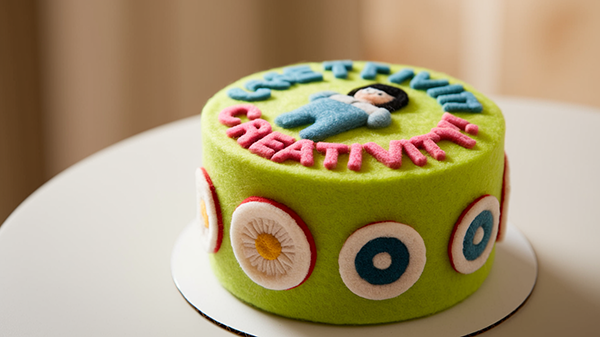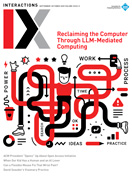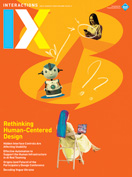Authors: ChungHa Lee, DaeHo Lee
Posted: Fri, October 10, 2025 - 4:04:00
With the rise of generative AI, AI artists are pioneering new creative processes. But does easier creation enabled by AI change the essence of creativity? We explored how AI artists engage with generative models—not just as tools but as creative partners—and what this means for the future of creativity.
To understand how artists integrate generative AI into their creative workflows, we’ve been following those with a distinct artistic identity, a unique approach to AI, and strong engagement within AI art communities on Instagram. They leverage the latest AI models to generate artwork quickly while improving their skills through online tutorials and workshops. AI-assisted creation is no longer an experimental approach; it has become a legitimate profession within the content industry. However, as AI lowers the technical barriers to creation, competition among creators has become fiercer.
AI artists cannot be categorized under a single label. Traditionally, when we think of an artist, we picture a full-time professional. The reality, though, is far more complex. Not all YouTubers are full-time content creators, and AI artists exist in various forms. Some, such as designers and content creators, integrate AI into their commercial work [1]. Others are social creators sharing AI-generated content on platforms such as Instagram, YouTube, and TikTok to build their audiences [2]. Hobbyist creators use AI tools purely for artistic exploration and experimentation [3].
Our research journey into AI art started with a yearlong deep dive into ways AI artists craft prompts for text-to-video models to bring mise-en-scène to life in music videos [4]. We were particularly interested in how AI artists balance technical constraints with artistic intention. Along the way, we built a system to help them make mise-en-scène elements more concrete. During our year of research, GenAI technology for video creation took some big leaps. At first, Runway’s Gen-2 model could only generate four-second clips. But with the arrival of Gen-3, scenes up to 10 seconds suddenly became possible. That might not sound like a huge jump, but it’s a game-changer for AI artists working on cinematic content. Think about a typical TV drama or movie scene: When a character delivers a line or conveys an essential message in a single shot, at least eight to 12 seconds are usually needed to keep the flow natural [5]. With better AI tools, creators have more flexibility to maintain narrative context, making their AI-generated scenes more cohesive and expressive.

Image by ChungHa Lee, using Midjourney.
If AI Has Made Creation Easier, Has It Also Made Art Easier?
Through our study on music video scene creation using text-to-video model,we had the opportunity to meet 24 AI artists. Our study revealed that they prioritize inspiration over structured guidance. We found that, paradoxically, while AI undoubtedly simplifies the creative process, AI artists emphasize their role in creation even more. They do not seek rigid step-by-step instructions; instead, they prefer to derive inspiration from existing images, video archives, or other artworks before using AI to refine their unique style.
We also observed that AI artists often press the "generate image" button multiple times with the same prompt to preview different aesthetic possibilities before committing to a creation. They do this to avoid producing an image that feels entirely AI-generated and instead refine their artistic vision through iterative exploration. They navigate toward an optimal outcome by comparing their conceptual intentions with the AI’s interpretation of their prompts. Interestingly, while the aesthetics of AI-generated outputs vary depending on the generative model used, each artist maintains a distinct artistic style that reflects their creative vision. To achieve their desired results, many artists experiment with the same prompt across different AI services, comparing outputs and refining their approach to find the most suitable method.
How Should Creativity Support Tools Evolve in the Age of AI?
The trend shows that competition in the AI era is no longer about how quickly one can create but how original one can be. While AI has democratized content creation, it has also intensified competition. More people than ever can engage in creative work, but this accessibility raises the bar. To stand out, creators must produce distinct and deeply personal work. Ultimately, AI has changed how we create, but true originality still comes from human vision. AI artists are not looking for instant results—they seek tools that help them develop their craft. Therefore, creativity support tools must evolve beyond mere automated generation and assist artists in refining and enhancing their artistic expression. We propose three key directions for the evolution of creativity support tools.
Deliver inspiration: Supporting the starting point of creation. AI artists tend to value compelling visual inspiration more than rigid step-by-step guidance when starting a project. Most creativity support tools start by asking users to specify what they want to create. AI artists, however, often begin their process by exploring image archives, video references, and stylistic inspirations before generating their work. Midjourney displays artworks created by other artists in a gallery format, openly sharing the prompts and styles used to generate them, allowing users to both reproduce content and draw inspiration from existing works. Similarly, creativity support tools should offer smart reference suggestions, refine rough sketches into detailed outputs, and provide AI-driven style feedback, helping artists shape their ideas rather than execute them.
Reflect artistic identity: Making AI artists the directors. AI-assisted creation should not be a passive process. Instead, AI artists should be able to direct AI models, much like an assistant director on a film set who refines the director’s vision and coordinates the production process [4]. For example, Ideogram provides a free-form canvas where artists can customize and remix their initial creations by adjusting elements such as color schemes and styles. AI artists need tools to fine-tune and control AI-generated results through iterative feedback and interactive adjustments. Creativity support tools should prioritize customization and offer adjustable parameters, style-transfer controls, and iterative refinement tools that let artists mold AI outputs to match their unique vision.
Connect artists: Enhancing collaboration and feedback. AI artists create and engage in conversations, collaborations, and feedback exchanges with other artists. Therefore, future tools should integrate features facilitating peer-to-peer collaboration and real-time feedback. For instance, Runway hosts the Runway Watch channel, organizes the AI Film Festival, and collaborates with entertainment companies to showcase AI-generated content from artists. Likewise, AI-generated artworks could be shared within dedicated networks where artists working in similar styles can exchange critiques and insights. Creativity support tools should also enable interactive cocreation, allowing multiple artists to refine a piece collaboratively or experiment with AI-driven remixing of one another’s work in real time.
Creativity support tools for AI artists must evolve to better support the individuality and artistic intentions of AI artists. The next step for these tools is to become active, creative partners, supporting artists in exploring new possibilities with AI. AI has not and cannot redefine the essence of art—true creativity remains a human pursuit. AI artists need tools that amplify their instincts, not replace them.
Endnotes
1. Kawakami, R. and Venkatagiri, S. The impact of generative AI on artists. Proc. of the 16th Conference on Creativity & Cognition. ACM, 2024, 79–82; https://doi.org/10.1145/3635636.3664263
2. Kim, J. and Kim, H. Unlocking creator-AI synergy: Challenges, requirements, and design opportunities in AI-powered short-form video production. Proc. of the 2024 CHI Conference on Human Factors in Computing Systems. ACM, 2024, Article 171, 1–23; https://doi.org/10.1145/3613904.3642476
3. Lee, C., Lee, D. and Hong, J.-H. MVPrompt: Building music-visual prompts for AI artists to craft music video mise-en-scène. Proc. of the 2025 CHI Conference on Human Factors in Computing Systems. ACM, 2025, Article 764, 1–21; https://doi.org/10.1145/3706598.3713876
4. Oppenlaender, J. The creativity of text-to-image generation. Proc. of the 25th International Academic Mindtrek Conference.ACM, 2022, 192–202; https://doi.org/10.1145/3569219.3569352
5. Bordwell, D. The Way Hollywood Tells It: Story and Style in Modern Movies. University of California Press, 2006.
Posted in: on Fri, October 10, 2025 - 4:04:00
ChungHa Lee
View All ChungHa Lee's Posts
DaeHo Lee
View All DaeHo Lee's Posts







Post Comment
No Comments Found